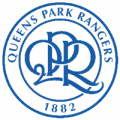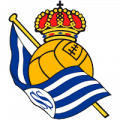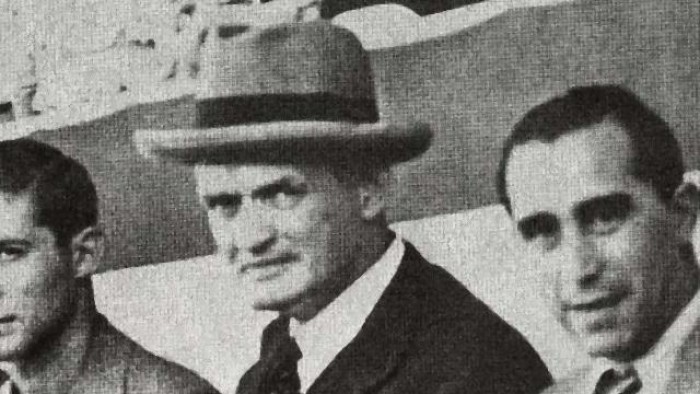Patrick O'Connell, born in County Westmeath in 1887, was an Irish international midfielder and a participant in one of the most controversial games of football the English game has seen. Today, he is hardly remembered - except, that is, in Spain.
O'Connell, affectionately known as Don Patricio, was honoured earlier this year with a bust at the Estadio Benito Villamarín, home of Real Betis. The Irishman led the Seville club to their only league title in the 1934-35 season, but it is in the Camp Nou where his presence is most keenly felt today. Without him, Barcelona may not have existed today.
And yet, he lay for decades in an unmarked London grave having died in the capital, alone and destitute.
International caps and controversy
O'Connell's playing career was one of extreme highs and peculiar lows. Impressive performances for the Republic of Ireland - including their first ever victory over England, 3-0 at Ayresome Park - saw him sign for Sheffield Wednesday, but he failed to make a mark there and was eventually sold to Hull City.
In two seasons there, he played well enough to earn a move to Manchester United. His career there was interrupted by the First World War, but in the early stages of the conflict he was involved in a match-fixing scandal during a game against Liverpool.
With United 1-0 up and authorities later reporting an unusual number of bets on a 2-0 win at 7/1 odds, they won a penalty. O'Connell, far from a regular scorer, demanded to take the spot-kick and blasted it so far wide that the match referee wasn't sure whether or not to order a retake. He decided against it, the match went on and sure enough, United prevailed 2-0.
Players from both sides were later implicated in the scandal. With the league soon to be suspended due to the war, some had sympathy for the men whose livelihoods were about to be taken away from them, but O'Connell's role was unclear.
His penalty was so bad that some suggested he couldn't possibly be involved. On the other hand, it was thought that he could have missed on purpose to attempt to conceal his involvement, safe in the knowledge that a second goal would be engineered. In the end, O'Connell was never punished.
When the war was over, O'Connell moved north to see out his career first in Scotland with Dumbarton, then back down to Northumberland with Ashington, where he took the manager's job upon his retirement.
Arrival in Santander
Then, with no warning to his family or friends, he turned up in Spain. He was thought missing at home, but clues to his whereabouts were provided by envelopes of cash arriving to his family from sunny Santander.
Taking over from five-time England international Fred Pentland as manager, he took charge of Racing Santander, guiding them to numerous regional trophies and joining the first La Liga season in 1929, where they finished bottom.
He then spent two years at latter-day hipster favourites Real Oviedo, before moving on to Betis in 1931. Here, he would become legend.
Joining them in the second division, he took the side then known as Betis Balompié up as champions in 1932. Three years later, they were going into the final match of the season needing a win against his former side Santander to overtake Real Madrid and claim a final-day win.
Betis' only league title
Their challenge had been founded on a superb defence. Conceding almost half of the next-best total in the division, Santander had been transformed by Don Patricio's commitment to fitness, tactics, and professionalism, but they may have been given a helping hand on their big day.
The story goes that he dropped in to pay a visit to his former side the night before the match, enquiring whether they might be convinced to take it easy against Betis. If true, it seems unlikely that they would have taken his message into account - the club chairman, José María de Cossio, wanted Madrid to win the title and offered his side a substantial bonus to beat Betis.
It wasn't enough - Betis won 5-0, their biggest away win of the season, and claimed their first-ever title. To this day, it is also their last.
O'Connell left at the end of that season, moving to the Catalan capital with civil war looming to join Barcelona and underline his allegiance to Franco.
The Spanish Civil War began in 1936, and the national league was suspended in favour of smaller, regional tournaments. Early in the war, club president Josep Sunyol was killed by pro-Franco forces while O'Connell was at home in Ireland. The club said they would not begrudge him his decision if he remained there, but O'Connell returned to lead his new side.
Saving Barcelona
The war drained Barcelona, and the club was struggling financially until a Mexican businessman invited O'Connell to tour his country in 1937. He accepted, and took his his players to South America.
By the end of the tour, only four of the original squad remained, the rest choosing to stay in South America or move elsewhere in Europe once the tour was over. O'Connell was without a team but had raised enough money on the trip to ensure the club survived. His job was done.
He spent ten more years in management; first back at Betis, then moving to city rivals Sevilla, then another return to Santander, before drawing his career to a close and returning to Britain in 1949.
What happened to him after that is not really known, though he was found to be in financial difficulties some years after. In 1954, Betis made clear that their affections for their former manager hadn't been dulled by his stint at Sevilla, organising a benefit match to raise money for him.
It wasn't enough. He died five years later, contracting pneumonia while living off national assistance in his brother's attic in London.
Recently, though, efforts have been made to tell his story at last. As well as the statue at Betis, funds have been raised to have his grave remarked, a mural painted in his honour, and a plaque erected at his Dublin home. It may have taken time, but the saviour of Barcelona is forgotten no more.
-
This article is part of a regular feature series, 'The A-Z of Forgotten Football Heroes'. Check out the last entry, on 'The Second Johan', Neeskens, here.









































